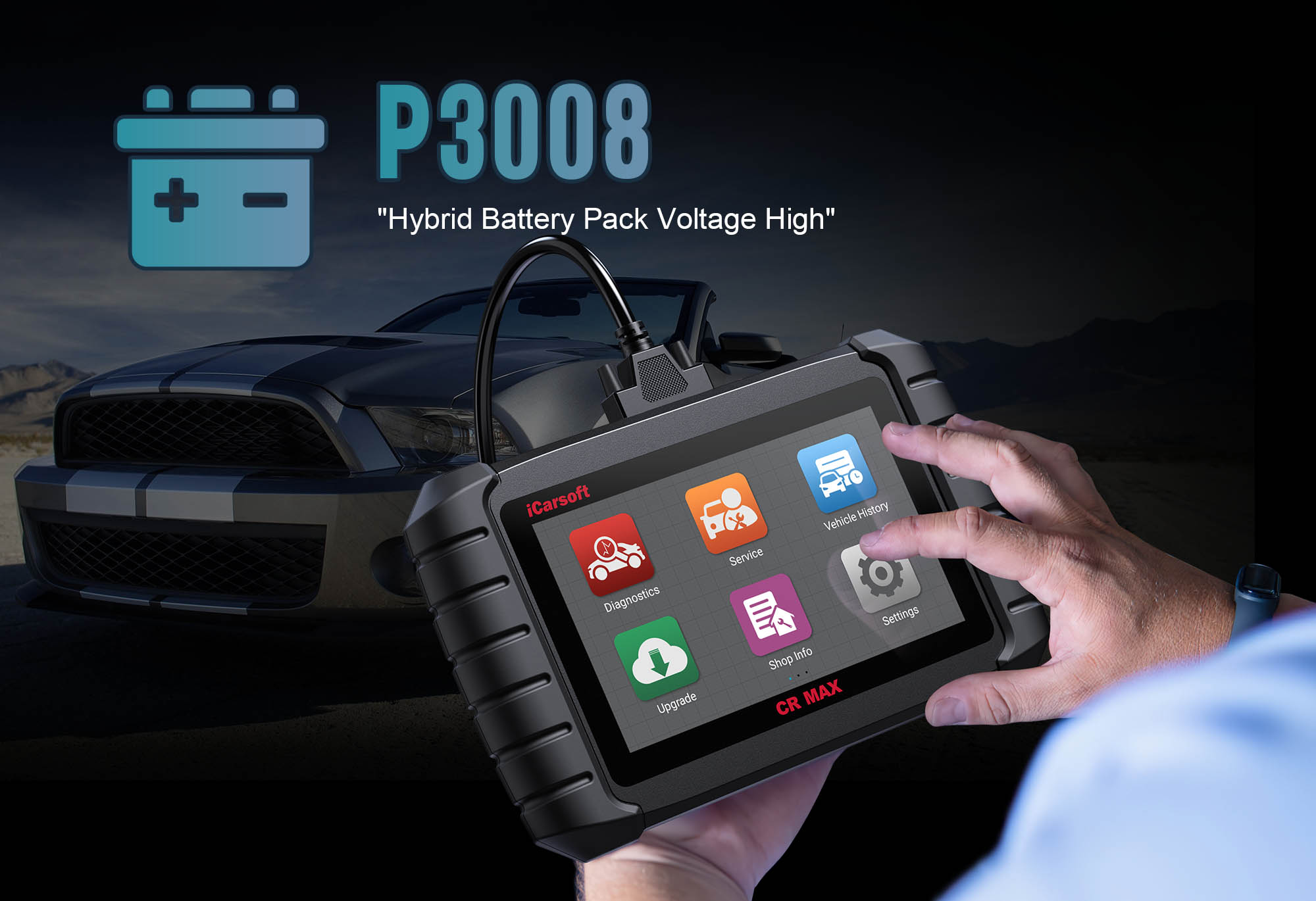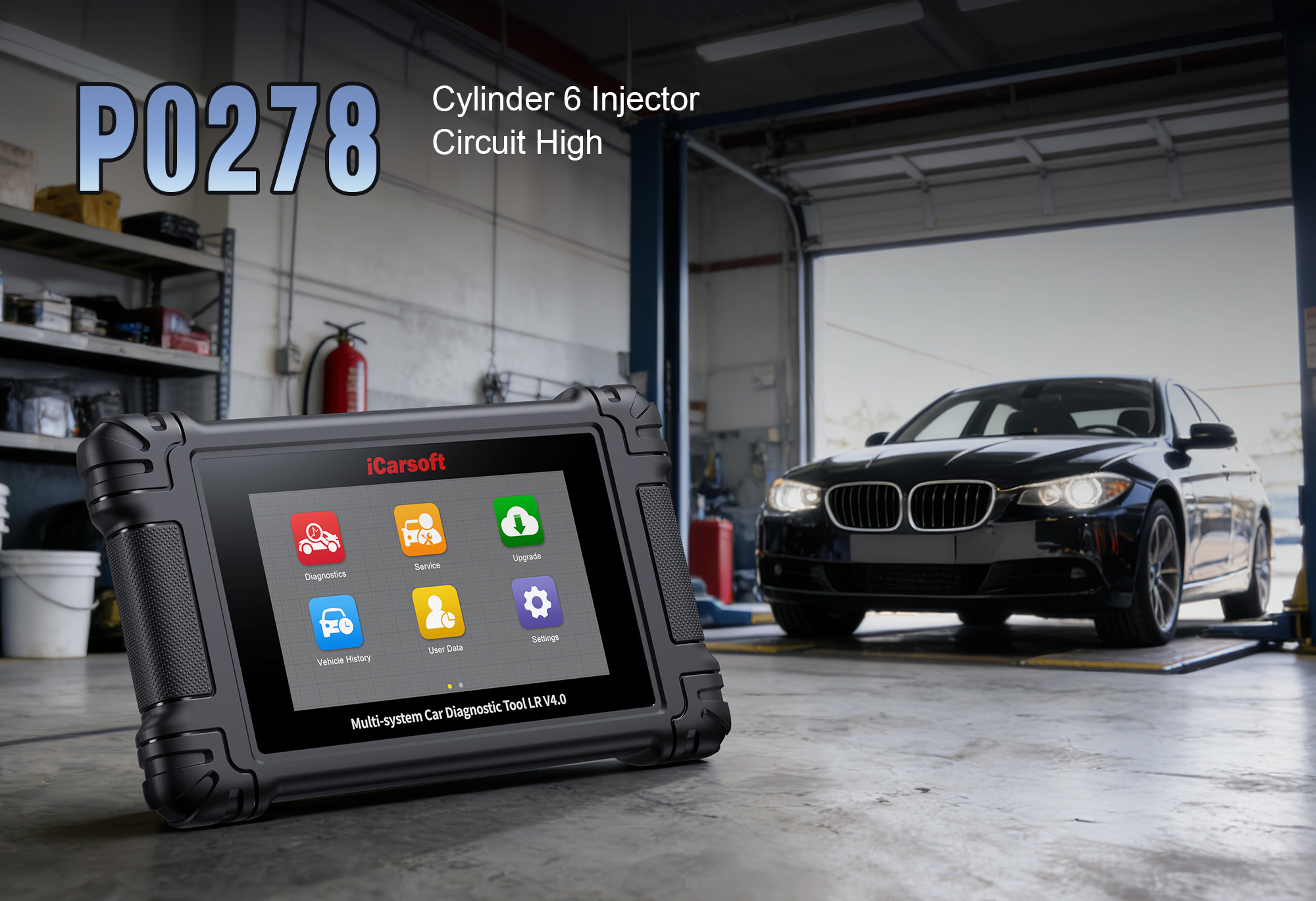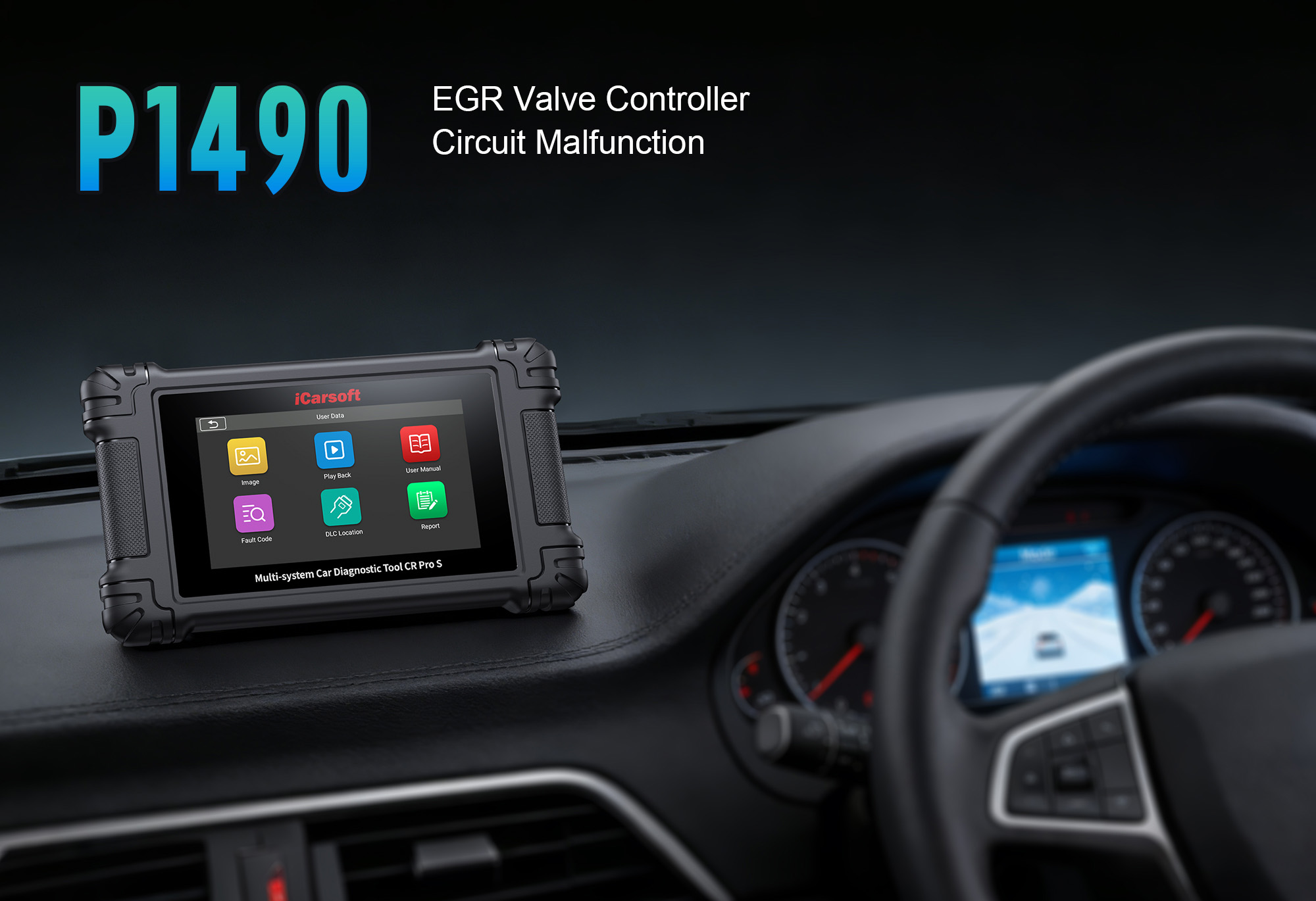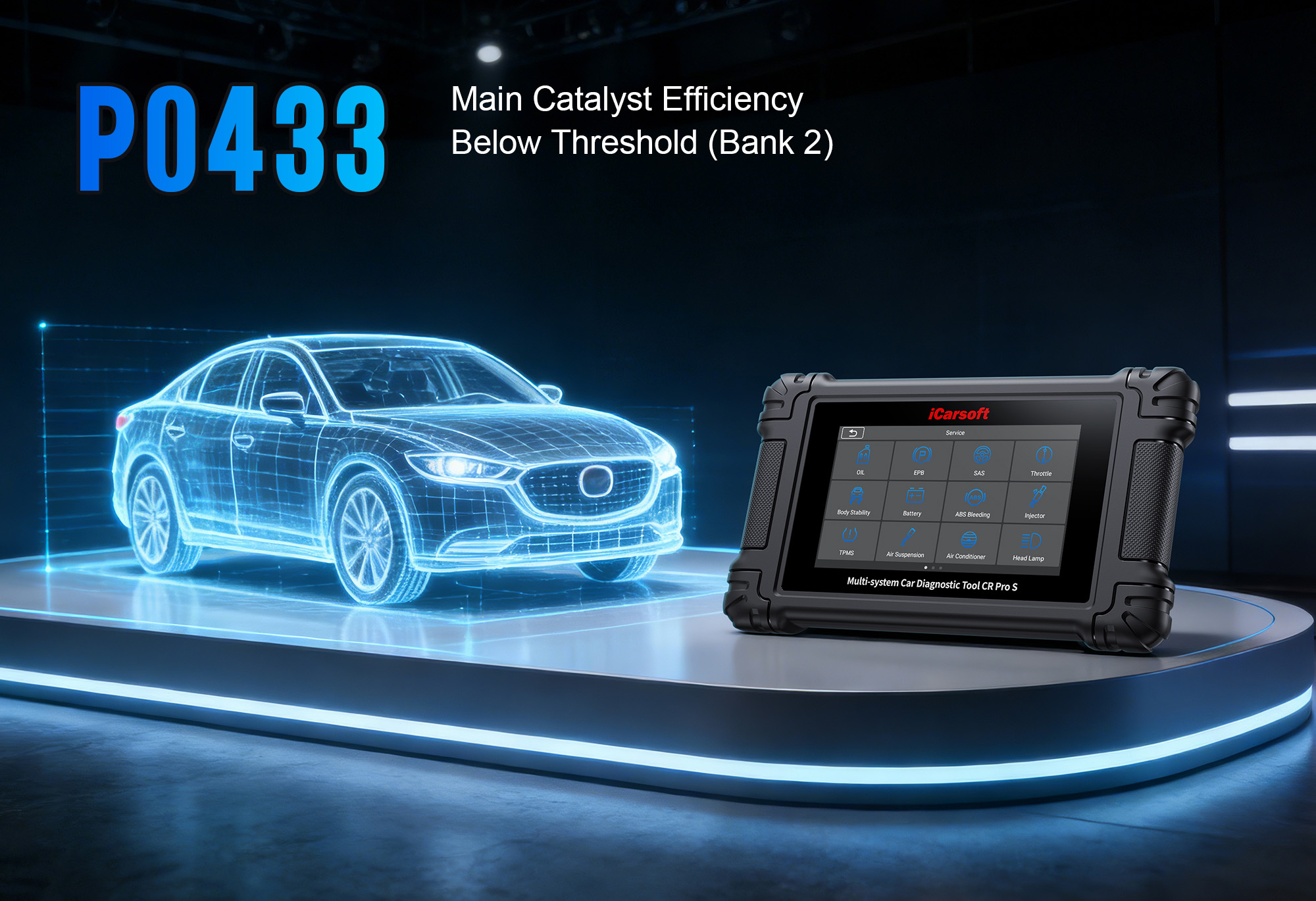Understanding and Fixing Trouble Code P3008: A Comprehensive Guide
Encountering trouble code P3008 can be alarming—this code signals "cylinder confusion" in your engine, often leading to rough performance, misfires, and reduced power. Left unaddressed, it can cause further engine damage and increased fuel consumption. In this guide, we’ll break down what P3008 means, its symptoms, root causes, and step-by-step solutions. We’ll also show how the iCarsoft CR MAX diagnostic tool simplifies pinpointing and resolving the issue.
What is Trouble Code P3008?
P3008 is a generic OBD-II trouble code defined as "Cylinder Confusion Detected". It triggers when the engine control module (ECM) identifies irregular behavior in one or more cylinders, disrupting the engine’s ability to track and coordinate cylinder firing sequences.
Here’s what happens:
-
Your engine relies on precise timing of fuel injection, ignition, and valve operation—coordinated by the ECM using data from sensors (camshaft position, crankshaft position, etc.).
-
"Cylinder confusion" occurs when the ECM loses track of which cylinder is firing or detects unexpected combustion patterns (e.g., a cylinder firing out of sequence).
-
This code often appears alongside related issues like P0401 (EGR flow insufficiency) or P0341 (camshaft position sensor problems), as noted in Peugeot and other manufacturer forums.
P3008 is not vehicle-specific—it affects all makes and models with OBD-II systems, though it’s more commonly reported in European brands like Peugeot, Citroën, and Volkswagen.
Common Symptoms of P3008 Code
P3008 symptoms are hard to miss, as they directly impact engine performance. Watch for these warning signs:
Engine Misfires or Irregular Running
The engine skips or stumbles during operation, especially under load. You may feel distinct "jerks" as cylinders fail to fire properly.
Rough Idle
At idle, the engine shakes or vibrates excessively—often noticeable through the steering wheel or dashboard. RPMs may fluctuate erratically (500–900 RPM).
Reduced Power and Performance
Acceleration feels sluggish, and the engine struggles to reach higher speeds. This is the ECM’s way of protecting the engine from damage.
Increased Fuel Consumption
Misfiring cylinders waste fuel—you’ll notice more frequent trips to the gas station, with MPG dropping by 10–20%.
Illuminated Check Engine Light
The light activates when the ECM detects cylinder confusion, often flashing during severe misfires (indicating immediate risk of catalytic converter damage).
Hesitation During Acceleration
The engine "stumbles" when pressing the gas pedal, especially from a stop—signaling delayed or incorrect cylinder firing.
Main Causes of P3008 Trouble Code
P3008 stems from issues that disrupt the engine’s ability to track or execute proper cylinder firing sequences. Here are the most common causes, ordered by likelihood:
Ignition System Problems
Faulty ignition coils, worn spark plugs, or damaged spark plug wires cause inconsistent firing. A weak spark in one cylinder disrupts the firing sequence, leading to confusion.
Fuel System Issues
Clogged fuel injectors, failing fuel pumps, or faulty pressure regulators disrupt fuel delivery. An imbalance in fuel supply to cylinders causes irregular combustion patterns.
Camshaft/Crankshaft Position Sensor Malfunctions
These sensors tell the ECM which cylinder is approaching top dead center (TDC). A faulty sensor sends incorrect timing data, leading the ECM to misidentify cylinders.
Air Intake System Leaks or Sensor Faults
Leaks in the intake manifold or a malfunctioning mass air flow (MAF) sensor create air-fuel mixture imbalances. Uneven air distribution confuses the ECM’s cylinder timing.
EGR System Malfunction
As noted in diagnostic forums, a stuck EGR valve or clogged EGR passages disrupts exhaust gas recirculation. This creates uneven combustion pressures across cylinders.
ECM Software or Hardware Issues (Rare)
Outdated ECM firmware may misinterpret sensor data, while internal hardware faults can disrupt cylinder tracking. This is rarely the cause but should be considered after ruling out other issues.
Diagnosing P3008 Code with iCarSoft CR MAX
Pinpointing the root cause of P3008 requires more than just reading the code—it demands analyzing cylinder-specific data and testing components. The iCarsoft CR MAX simplifies this with advanced diagnostic features:
-
1. Read Codes and Freeze-Frame Data
-
Connect the CR MAX to your vehicle’s OBD-II port, power it on, and select your make/model. Use AutoVIN Recognition for accurate system identification.
-
Navigate to Engine Control Module > Fault Codes > Read Codes to confirm P3008 and check for related codes (e.g., P0301-P0308 for specific cylinder misfires, P0340 for camshaft sensor issues).
-
Review freeze-frame data to see when the code triggered (e.g., "Idle," "3000 RPM")—this reveals if the issue occurs under specific conditions.
-
2. Monitor Live Data for Cylinder Irregularities
-
Go to Engine > Live Data > Cylinder Performance to track:
-
Individual cylinder misfire counts (identifies which cylinder is problematic).
-
Ignition timing advance per cylinder.
-
Camshaft/crankshaft position sensor signals (look for erratic readings).
-
Fuel injector pulse width (should be consistent across cylinders).
-
Anomalies (e.g., one cylinder with high misfire counts) point directly to the faulty system.
-
3. Perform Active Tests on Key Components
-
Use the CR MAX’s Special Functions > Active Tests to:
-
Fire individual fuel injectors to test for clogs or leaks.
-
Activate ignition coils one at a time to check for weak sparks.
-
Test camshaft/crankshaft sensors for response time and signal accuracy.
-
Components that fail these tests are likely causing the cylinder confusion.
-
4. Check Sensor Signals and Wiring
-
Use the CR MAX’s Multimeter function to test:
-
Resistance in ignition coils and spark plug wires (should match OEM specs).
-
Voltage at camshaft/crankshaft sensors (typically 5V reference, 0.5–4.5V signal).
-
Continuity in wiring harnesses (no breaks between sensors and ECM).
-
Use the Wiring Diagrams feature to locate sensor connectors and test points.
-
5. Analyze EGR and Intake System Data
-
Monitor EGR valve position and intake manifold pressure in live data. A stuck EGR valve or fluctuating pressure indicates leaks.
-
Run the EGR Flow Test (under Special Functions) to verify proper operation—restricted flow often accompanies P3008.
Step-by-Step Repair Guide for P3008 Code
Once you’ve identified the cause with the CR MAX, follow these targeted repairs:
-
1. Address Ignition System Issues
-
Spark Plugs: Remove and inspect—replace if worn, fouled, or beyond the 30,000–60,000 mile service interval. Use OEM-recommended plugs (e.g., iridium or platinum).
-
Ignition Coils: Swap coils between cylinders (e.g., move coil from cylinder 1 to 2) and re-scan. If the misfire follows the coil, replace it. Use the CR MAX’s Coil Test to confirm failure.
-
Wires (if equipped): Replace cracked or corroded spark plug wires with OEM-spec replacements.
-
2. Fix Fuel System Problems
-
Fuel Injectors: Use a fuel system cleaner (e.g., iCarsoft Fuel Injector Cleaner) to clear clogs. For persistent issues, have injectors professionally cleaned or replaced.
-
Fuel Pressure: Test pressure with a gauge (refer to OEM specs). Low pressure indicates a failing pump or clogged filter—replace as needed.
-
Pressure Regulator: Replace if leaking or unable to maintain consistent pressure.
-
3. Repair or Replace Camshaft/Crankshaft Sensors
-
Locate sensors using the CR MAX’s Component Location guide (camshaft sensor is often on the cylinder head; crankshaft sensor near the crankshaft pulley).
-
Disconnect the electrical connector, remove mounting bolts, and install a new OEM sensor. Apply anti-seize to metal threads (if applicable).
-
Clear codes and test drive—use the CR MAX to verify stable sensor signals.
-
4. Resolve Air Intake Issues
-
Intake Leaks: Inspect hoses and manifold gaskets for cracks. Spray soapy water on suspect areas—bubbles indicate leaks. Replace damaged parts and retighten clamps.
-
MAF Sensor: Clean with MAF sensor cleaner (never touch the sensor element). If cleaning fails, replace the sensor.
-
5. Service the EGR System
-
Remove the EGR valve and clean carbon deposits with EGR cleaner. Use a soft brush to clear passages in the intake manifold.
-
Replace the valve if it’s stuck open/closed or fails the CR MAX’s EGR Function Test.
-
6. Update ECM Software (If Needed)
-
Check for ECM updates using the CR MAX’s Vehicle Info > TSB Lookup (Technical Service Bulletins). Dealerships can reflash the ECM with updated firmware to resolve software-related cylinder confusion.
-
7. Verify Repairs
-
Use the CR MAX to Clear Codes and perform a Full System Scan.
-
Test drive for 30+ miles, including highway and city driving, while monitoring live data with the CR MAX.
-
Re-scan—no P3008 or related codes = successful repair.
Prevention Tips for P3008 and Related Codes
Avoid future P3008 issues with these proactive maintenance habits:
Stick to Ignition System Service Intervals
Replace spark plugs every 30,000–60,000 miles and ignition coils every 100,000 miles—before they fail.
Use Quality Fuel and Additives
Premium fuel reduces carbon buildup. Add a fuel system cleaner every 5,000 miles to keep injectors clean.
Inspect Sensors During Routine Maintenance
Check camshaft/crankshaft sensors for damage during oil changes. Clean MAF sensors annually.
Service the EGR System Regularly
Clean the EGR valve and passages every 60,000 miles to prevent carbon buildup.
Perform Regular Diagnostic Scans
Use the iCarsoft CR MAX every 3 months to catch minor issues before they escalate to P3008.
FAQ: Common Questions About P3008
Q: Is P3008 a serious code? Should I stop driving immediately?
A: Yes, P3008 is serious. If your check engine light is flashing, stop driving—this indicates active misfires that can damage the catalytic converter. For a steady light, drive cautiously to a repair facility within 1–2 days.
Q: Can P3008 fix itself? Will the code disappear on its own?
A: No—P3008 indicates a physical issue (faulty sensor, worn parts, etc.) that won’t resolve without repairs. The code may temporarily clear, but it will return until the root cause is fixed.
Q: How much does it cost to fix P3008?
A: Costs vary by cause: Spark plugs ($50–$150), ignition coils ($100–$300), sensors ($80–$250), or fuel injectors ($300–$600). DIY repairs reduce labor costs significantly.
Q: Why is P3008 more common in Peugeot/Citroën vehicles?
A: These brands use complex cylinder management systems (e.g., variable valve timing) that are more sensitive to sensor inaccuracies. The CR MAX includes Peugeot-specific diagnostics to address this.
Q: Can a dead battery cause P3008?
A: Indirectly—low battery voltage can disrupt sensor signals, leading to temporary cylinder confusion. However, P3008 from a dead battery should clear after recharging and resetting codes.
Summary Table: P3008 Diagnosis & Repair Steps
|
Step
|
Action with iCarsoft CR MAX
|
Common Fix
|
|
1
|
Read P3008 + related codes; check freeze-frame data
|
Identify affected systems (ignition, sensors, etc.)
|
|
2
|
Monitor live cylinder data and misfire counts
|
Pinpoint specific problematic cylinder(s)
|
|
3
|
Run active tests on injectors, coils, and sensors
|
Replace failed components (coils, injectors, sensors)
|
|
4
|
Check EGR flow and intake pressure
|
Clean/replace EGR valve; fix intake leaks
|
|
5
|
Clear codes and verify with test drive
|
Confirm repairs resolved cylinder confusion
|
Conclusion
Trouble code P3008 (cylinder confusion) demands prompt attention to avoid engine damage and restore performance. While its causes range from simple (worn spark plugs) to complex (sensor failures), the iCarsoft CR MAX simplifies diagnosis by providing cylinder-specific data, active component tests, and manufacturer-specific tools.
By following the step-by-step guide—starting with ignition and fuel system checks, then moving to sensors and EGR components—you can resolve P3008 efficiently. Regular maintenance and proactive scanning with the CR MAX will help prevent recurrence, keeping your engine running smoothly.
Don’t let cylinder confusion leave you stranded. With the right diagnostics and repairs, you can address P3008 and get back on the road with confidence.





